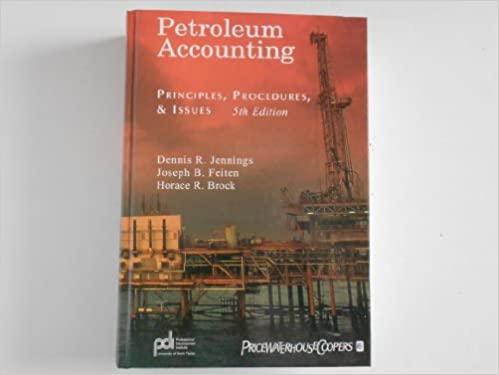Question
Twenty metrics of liquidity, Solvency, and Profitability The comparative financial statements of Automotive Solutions Inc. are as follows. The market price of Automotive Solutions Inc.
Twenty metrics of liquidity, Solvency, and Profitability
The comparative financial statements of Automotive Solutions Inc. are as follows. The market price of Automotive Solutions Inc. common stock was $58 on December 31, 20Y8.
AUTOMOTIVE SOLUTIONS INC. Comparative Income Statement For the Years Ended December 31, 20Y8 and 20Y7 20Y8 20Y7 Sales $4,707,040 $4,336,800 Cost of goods sold (1,737,400) (1,598,410) Gross profit $2,969,640 $2,738,390 Selling expenses $(960,100) $(1,216,840) Administrative expenses (817,860) (714,650) Total operating expenses (1,777,960) (1,931,490) Operating income $1,191,680 $806,900 Other revenue and expense: Other income 62,720 51,500 Other expense (interest) (368,000) (202,400) Income before income tax $886,400 $656,000 Income tax expense (106,400) (78,600) Net income $780,000 $577,400
AUTOMOTIVE SOLUTIONS INC. Comparative Statement of Stockholders Equity For the Years Ended December 31, 20Y8 and 20Y7 20Y8 20Y7 Preferred Stock Common Stock Retained Earnings Preferred Stock Common Stock Retained Earnings Balances, Jan. 1 $700,000 $800,000 $3,338,900 $700,000 $800,000 $2,819,300 Net income 780,000 577,400 Dividends: Preferred stock (9,800) (9,800) Common stock (48,000) (48,000) Balances, Dec. 31 $700,000 $800,000 $4,061,100 $700,000 $800,000 $3,338,900
AUTOMOTIVE SOLUTIONS INC. Comparative Balance Sheet December 31, 20Y8 and 20Y7 Dec. 31, 20Y8 Dec. 31, 20Y7 Assets Current assets: Cash $1,247,490 $718,630 Temporary investments 1,888,090 1,190,880 Accounts receivable (net) 934,400 876,000 Inventories 700,800 540,200 Prepaid expenses 236,013 143,730 Total current assets $5,006,793 $3,469,440 Long-term investments 1,151,517 24,601 Property, plant, and equipment (net) 5,520,000 4,968,000 Total assets $11,678,310 $8,462,041 Liabilities Current liabilities $1,517,210 $1,093,141 Long-term liabilities: Mortgage note payable, 8%, due in 15 years $2,070,000 $0 Bonds payable, 8%, due in 20 years 2,530,000 2,530,000 Total long-term liabilities $4,600,000 $2,530,000 Total liabilities $6,117,210 $3,623,141 Stockholders' Equity Preferred $0.70 stock, $50 par $700,000 $700,000 Common stock, $10 par 800,000 800,000 Retained earnings 4,061,100 3,338,900 Total stockholders' equity $5,561,100 $4,838,900 Total liabilities and stockholders' equity $11,678,310 $8,462,041 Instructions:
Determine the following measures for 20Y8. Round ratio values to one decimal place and dollar amounts to the nearest cent. For number of days' sales in receivables and number of days' sales in inventory, round intermediate calculations to the nearest whole dollar and final amounts to one decimal place. Assume there are 365 days in the year.
1. Working capital $ 3,489,583 2. Current ratio 3.3 3. Quick ratio 2.7 4. Accounts receivable turnover 5.2 5. Days' sales in receivables 70.2 days 6. Inventory turnover 2.8 7. Days' sales in inventory 130.4 days 8. Debt ratio 52.4 % 9. Ratio of liabilities to stockholders' equity 1.1 10. Ratio of fixed assets to long-term liabilities 1.2 11. Times interest earned 3.4 times 12. Times preferred dividends earned 60.0 times 13. Asset turnover 173.0 14. Return on total assets % 15. Return on stockholders equity % 16. Return on common stockholders equity % 17. Earnings per share on common stock $ 18. Price-earnings ratio 19. Dividends per share of common stock $ 20. Dividend yield % Feedback 1. Subtract current liabilities from current assets. 2. Divide current assets by current liabilities. 3. Divide quick assets by current liabilities. Quick assets are cash, temporary investments, and receivables. 4. Divide net sales by average accounts receivable. Average Accounts receivable = (Beginning Net Accounts Receivable + Ending Net Accounts Receivable) 2 5. Divide average accounts receivable by average daily sales. Average Accounts receivable = (Beginning Net Accounts Receivable + Ending Net Accounts Receivable) 2 Average daily sales are net sales divided by 365 days. 6. Divide cost of goods sold by average inventory. Average Inventory = (Beginning Inventories + Ending Inventories) 2 7. Divide average inventory by average daily cost of goods sold. Average Inventory = (Beginning Inventories + Ending Inventories) 2 Average cost of goods sold are cost of goods sold divided by 365 days. 8. Divide total liabilities by total assets. 9. Divide total liabilities by total stockholders equity. 10. Divide property, plant and equipment (net) by long-term liabilities. 11. Divide the sum of income before income tax plus interest expense by interest expense. 12. Divide net income by preferred dividends [Preferred stock par value x dividend per preferred share]. 13. Divide net sales by average property, plant & equipment, . Average PPE = (Beginning PPE + Ending PPE) 2 14. Divide the sum of net income plus interest expense by average total assets. Average total assets = (Beginning Total Assets + Ending Total Assets) 2 15. Divide net income by average stockholders equity. Average stockholders equity = (Beginning StockholdersEquity + Ending StockholdersEquity) 2 16. Divide net income minus preferred dividends [Preferred stock par value x dividend per preferred share] by average common stockholders equity. Common StockholdersEquity = Common Stock + Retained Earnings Average Common StockholdersEquity = (Beginning Common Stockholders equity + Ending Common StockholdersEquity) 2 17. Divide net income minus preferred dividends [Preferred stock par value x dividend per preferred share] by common shares outstanding (common stock par value). 18. Divide common market share price by common earnings per share (use answer from requirement 17). 19. Divide common dividends (from Statement of Stockholders Equity) by common shares outstanding (common stock par value). 20. Divide common dividends per share (use answer from requirement 19) by market share price.
Step by Step Solution
There are 3 Steps involved in it
Step: 1

Get Instant Access to Expert-Tailored Solutions
See step-by-step solutions with expert insights and AI powered tools for academic success
Step: 2

Step: 3

Ace Your Homework with AI
Get the answers you need in no time with our AI-driven, step-by-step assistance
Get Started


